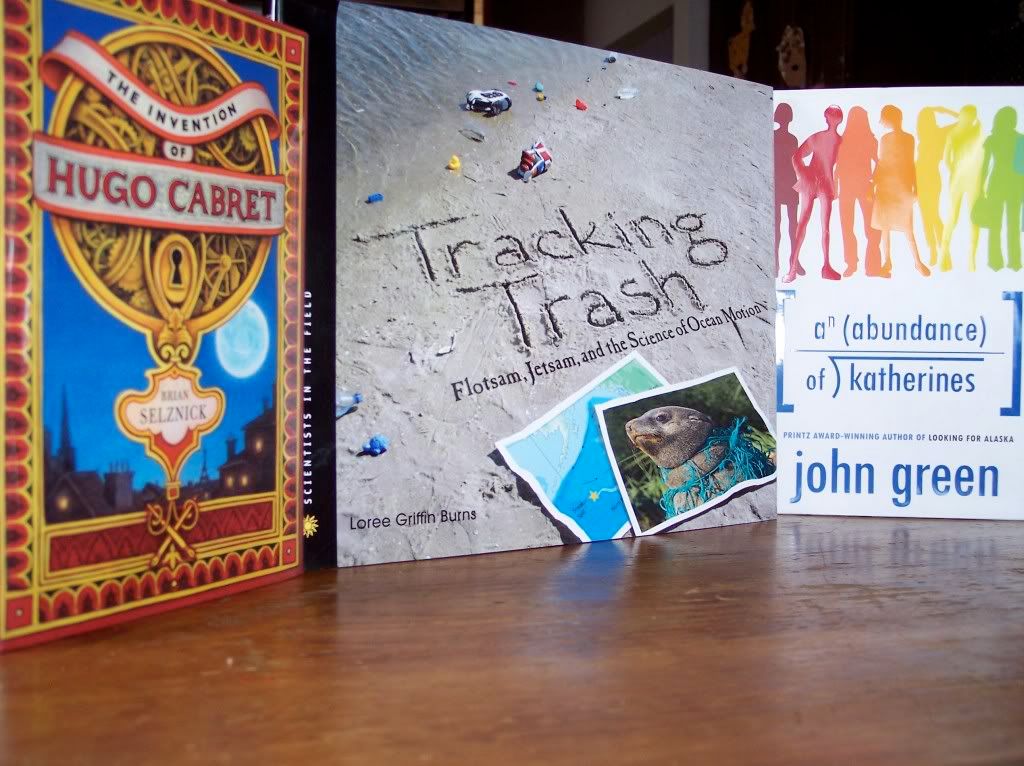~ They’re wildly different from one another and all amazing.

I sank into our cushy denim couch this weekend and disappeared into THE INVENTION OF HUGO CABRET by Brian Selznick. This is a book that’s impossible to stop reading, and it’s a genre all its own: part novel, part graphic novel, part sketchbook, and part classic cinema. Somehow, it does all of those things beautifully. Through beautiful drawings and spare, lovely prose, Selznick tells the story of Hugo Cabret, an Oliver-Twist-type character living in a Paris train station and trying to reconnect with his lost father through a mysterious mechanical man he saved from a fire. Like parts of the automaton, the pieces of this story turn and lock into place to reveal a magical mystery. My favorite excerpt is a bit of dialogue from Hugo to his friend Isabelle as he looks out over the city from behind the glass clock at the top of the train station:
Sometimes I come up here at night, even when I’m not fixing the clocks, just to look at the city. I like to imagine that the world is one big machine. You know, machines never have any extra parts. They have the exact number and type of parts they need. So I figure if the entire world is a big machine, I have to be here for some reason. And that means you have to be here for some reason, too.
A magical message from a magical creator of worlds.
TRACKING TRASH by Loree Griffin Burns is a trip to a different world — our oceans.
won a well-earned Boston Globe – Horn Book Award for this work of non-fiction that’s as transporting as any novel. My kids – 5 and 10 – were entranced as I read out loud about huge cargo spills of sneakers and bath toys, where the items washed up on beaches all over the world, and what it taught scientists about ocean currents. They were horrified — and so was I — by stories of “ghost nets” that are abandoned in the seas to become garbage magnets and death traps for wildlife. This is an important book that teaches stewardship without ever feeling preachy, and it’s well-deserving of the honors it’s receiving.
And finally — I’ll be honest here — it took me a while to warm up to AN ABUNDANCE OF KATHERINES. I started the book convinced that I’d love it, because how could the author of LOOKING FOR ALASKA let me down? John Green’s voice is every bit as authentic and funny in this book, but the math bugged me. Here’s the premise. Child prodigy Colin Singleton gets dumped by 19 girls named Katherine, takes his wounded heart on a road trip with his friend Hassan, meets a spectacular cast of characters in a dying factory town called Gutshot, and tries to cement his place in history by coming up with a formula to graph romantic relationships. Really, I thought. Who thinks this way? I love words and tolerate numbers, at best. I do not have a math brain, so I wasn’t buying into it. Until my 10-year-old son, who does have a math brain, came home from school and showed me the graphical representation he’d made of his two groups of friends, predicting how those two groups might interact when they leave their two elementary schools next year and join together at the middle school. It was like John Green was standing over my shoulder with a smug look, saying, “See??” I read the rest of the book with a much-improved attitude toward the math and loved the connections, the karma, and (mild spoiler ahead…) the fact that the nice guy gets the girl in the end.





Hiya Kate,
Thanks for the kind words about TRACKING TRASH. I am so glad you (and the kids) liked it!
Best,
Loree